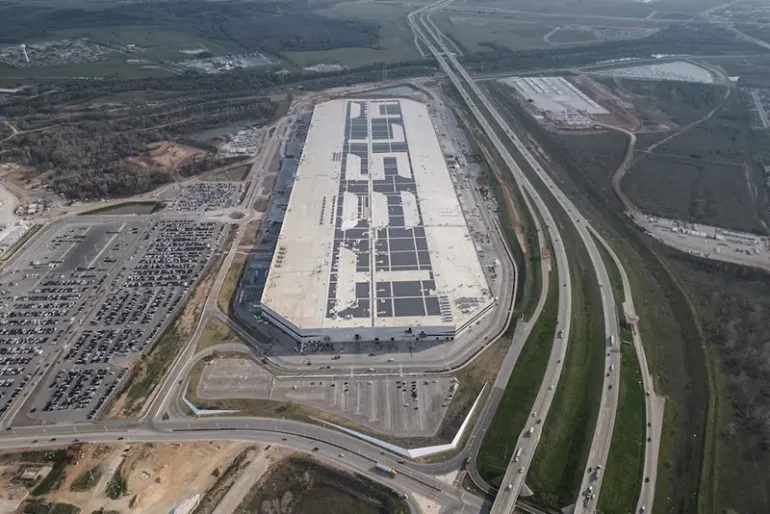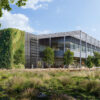🔴 Website 👉 https://u-s-news.com/
Telegram 👉 https://t.me/usnewscom_channel
By Chris Kirkham and Abhirup Roy
February 10, 2025 – 3:11 AM PST
Advertisement
(Reuters) – Elon Musk told investors in late January that Tesla would roll out “autonomous ride-hailing for money” by June in Austin, Texas — a state where the company faces almost no regulation, raising questions about how much safety and legal risk Tesla is willing to take on as it deploys unproven driverless technology on public streets.
Tesla has long blamed its customers for accidents involving the driver-assistance systems it calls Autopilot and Full Self-Driving (FSD), noting that it warns Tesla owners to stay ready to take over driving. Now Musk is vowing to deploy truly driverless taxis, a move legal experts say would place crash liability squarely on Tesla.
Musk has promised fully self-driving Teslas for about a decade and failed to deliver. The promises have grown more frequent, with more immediate timelines, in recent months as Musk has shifted Tesla’s focus toward autonomous vehicles and away from mass-market EV sales.
Yet Musk’s elusive comments continue to keep investors guessing about when — and at what scale, with what business model — Tesla will finally deploy fully self-driving technology that, to date, it has never displayed on public roads.
Tesla and Musk did not respond to requests for comment.
Nothing in Texas law would stop Tesla from launching a robotaxi service. The state takes a hands-off regulatory approach that aligns with Musk’s increasingly anti-government political stances as an advisor to U.S. President Donald Trump.
State law allows autonomous-vehicle companies free access to public streets provided they are registered and insured, like any human-driven car, and equipped with technology to record data about any potential crashes. No state agency issues permits for or oversees driverless-taxi services — and state law forbids cities and counties from enacting their own driverless-vehicle regulations.
State Senator Kelly Hancock, who sponsored the state’s 2017 autonomous-driving legislation, said the legislature wanted to promote the industry’s growth in a competitive marketplace and avoid barriers to entry.
“Being a conservative, I wanted to minimize government’s impact,” he told Reuters. “We can’t have a thousand different regulations. That’s how you kill an industry.”
Musk moved Tesla’s headquarters to Austin in late 2021 from California, where regulators tightly control where and how firms can operate autonomous vehicles. The only two companies that have secured permits to operate paid driverless taxi services to date, General Motors’ Cruise and Alphabet’s Waymo, logged millions of miles with regulators under more restrictive permits before getting approval to pick up passengers. (Cruise has since halted robotaxi operations).
On a January 29 earnings call, Musk said he expects to release an “unsupervised” version of its Full Self-Driving system in California this year. The two California agencies that regulate the industry told Reuters that Tesla has not applied for required permits to operate driverless vehicles or carry passengers and hasn’t reported testing data to the state since 2019.
California has no specific standards for how much testing is needed for approval, but other companies that have navigated the process logged millions of autonomous-vehicle testing miles under state oversight. Tesla has logged just 562 testing miles since 2016, state records show.
‘THE CHALLENGE WITH ELON’
Musk made his latest robotaxi promises the same day Tesla reported disappointing earnings, which missed analysts’ expectations and followed earlier news that Tesla posted its first-ever sales decline in 2024. Shares rose 3% the following day.
He promised Tesla would launch “autonomous ride-hailing for money in Austin, in June.” Musk did not say how many cars, how customers would access them or whether the service would be available to everyone.
The rollout of “unsupervised” FSD in California and “many regions of the country” would follow later this year, Musk said, without explaining whether that meant driverless-taxi services, a feature Tesla owners could buy, or some other offering.
Musk did say “unsupervised” FSD would be capable of driving with “no one in the car.”
Such comments often leave investors guessing what Tesla will actually deliver, and when, said Brian Mulberry, client portfolio manager at Zacks Investment Management, a Tesla investor.
“This is the challenge with Elon: You’re kind of reading through the tea leaves here and trying to extrapolate from some fragments what might actually happen,” he said. Mulberry added that he wasn’t particularly concerned about the specifics of Musk’s promises and timelines this year, provided Tesla shows progress: “The blueprint, I think, is there.”
Bryant Walker Smith, a University of South Carolina law professor focused on autonomous driving, said Texas requires no “pre-market approval” before Tesla can deploy driverless vehicles. Yet he doubted Tesla would attempt any broad deployment of autonomous technology – in Texas or anywhere – after what he called its underwhelming demonstration of a robotaxi concept, the Cybercab, last October on a Los Angeles-area movie-studio lot.
“Tesla is not going to flip a switch and suddenly make all of their cars capable of driving by themselves, anywhere, under any conditions,” he said.
Smith said the company might more likely attempt a small-scale test of its technology, possibly in limited areas of Austin in good weather, or with humans able to intervene by remote control to prevent crashes. “There are ways one could probably make that work,” he said.
‘WE HAVE NO POWER’
Autonomous vehicle testing and operation is allowed on Texas roads “as long as they meet the same safety and insurance requirements as every other vehicle on the road,” said Adam Hammons, a spokesperson for the state Department of Transportation.
Austin has seen a surge in driverless vehicles on its streets over the last two years, which has led to resident and government concerns after a series of near-miss incidents involving pedestrians, cyclists and other vehicles. In 2023, a group of more than 20 Cruise robotaxis caused a traffic jam near the University of Texas campus, blocking the street as they struggled to navigate around one another.
GM declined to comment.
The city has logged 78 formal complaints from law enforcement, emergency responders and residents since July 2023, which officials say may not capture all incidents involving the vehicles. One resident complaint from December described a Waymo vehicle blocking a lane of traffic for half an hour, causing “at least three very close call accidents.”
The complaint added: “I can’t believe that y’all are allowing potentially deadly technology to be tested on the citizens of this city.”
A Waymo spokesperson said the company has worked with local leaders and first responders to “earn the trust of Austin’s communities” and is constantly working to improve its service.
Police have run into problems where driverless vehicles don’t respond to hand signals from officers directing traffic, and the city has been unable to issue tickets to the vehicles, according to a spokesperson for Austin’s Transportation and Public Works department. The city recently came up with a way to submit complaints in municipal court when officers observe traffic violations.
Tesla reached out to Austin officials last May, and city officials provided information about local fire and police procedures, maps of schools and school zones, and traffic rules during special events, the spokesperson said.
Austin City Council member Zo Qadri, who represents downtown areas frequented by robotaxis, said he’s frustrated the city can’t impose rules on “private companies using these public roads as a testing ground.”
“Ultimately,” he said, “we have no power.”
Reporting by Chris Kirkham in Los Angeles and Abhirup Roy in San Francisco; editing by Brian Thevenot and Claudia Parsons
Advertisements below

